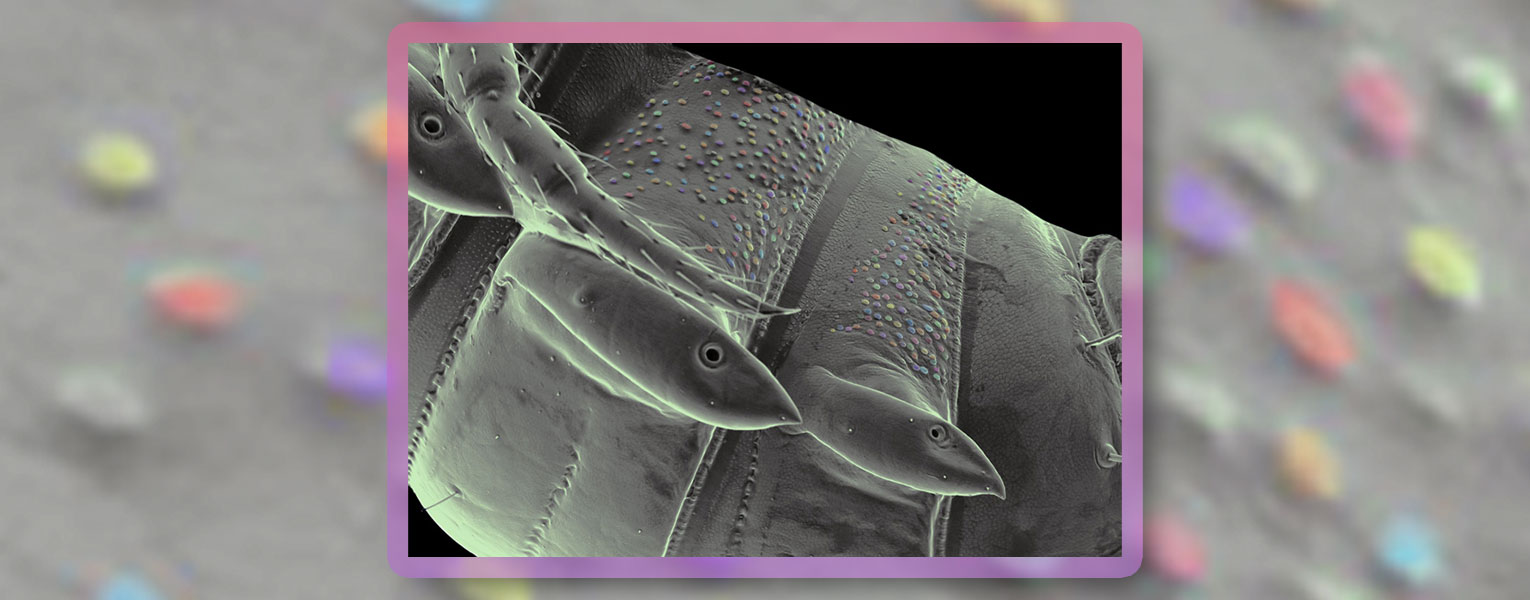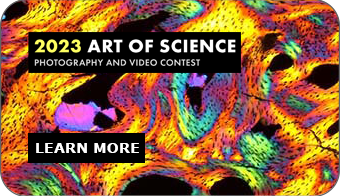9/29/2023
Art of Science: Millipede Marvel
A Close-up Look at a 'Creepy-crawly’ Wins a Top Spot
By Bethany Augliere
FAU graduate student, Jamie Knaub, said she finds beauty in the small things – including tiny bugs with lots of legs. Her recent image of a millipede earned honorable mention in the 2022 annual Art of Science photography and video contest, hosted by FAU’s Division of Research.
Knaub, a student in the Charles E. Schmidt College of Science, works as a research technician in the FAU High School Owls Imaging Lab, which is focused on exposing K-12 students to scientific discovery, lab safety and high-level research, she said. In her role, she oversees students using the equipment for coursework, science fair projects, as well as independent research.
The millipede Knaub photographed was found dead outside the high school. Since encouraging curiosity is at the core of the school’s mission, Knaub collected the specimen so the students could examine it in more detail using a microscope. “Who knew millipedes had spots on their belly?” she said.
To take the image, Knaub first adhered the millipede on a metal pin mount and coated it with gold particles to make it conductive. Then, she imaged it in the scanning electron microscope (SEM). “The SEM is different from other microscopes in that it doesn't use light, but rather electrons to visualize samples, hence why the specimen needed to be conductive,” she said.
In her photo, the ventral portion of the millipede displays colored bumps and the lateral projections are visible next to a single leg. “My favorite part of this image is the false coloring I applied to the spots on the millipede's underside,” said Knaub, noting that the colors remind him of candy, like Smarties or candy buttons.
“My dad is a photographer, so I grew up around cameras and he sparked my interest in photography from an early age,” Knaub said. “However, through my own research experiences, I have found my own love of photography as a scientist. Most of the imaging I perform is microscopy, and I think it's important to show the diversity and beauty of our world at the micro-scale because it's easily unnoticed or overlooked with the natural eye.”
If you would like more information, please contact us at dorcommunications@fau.edu.

